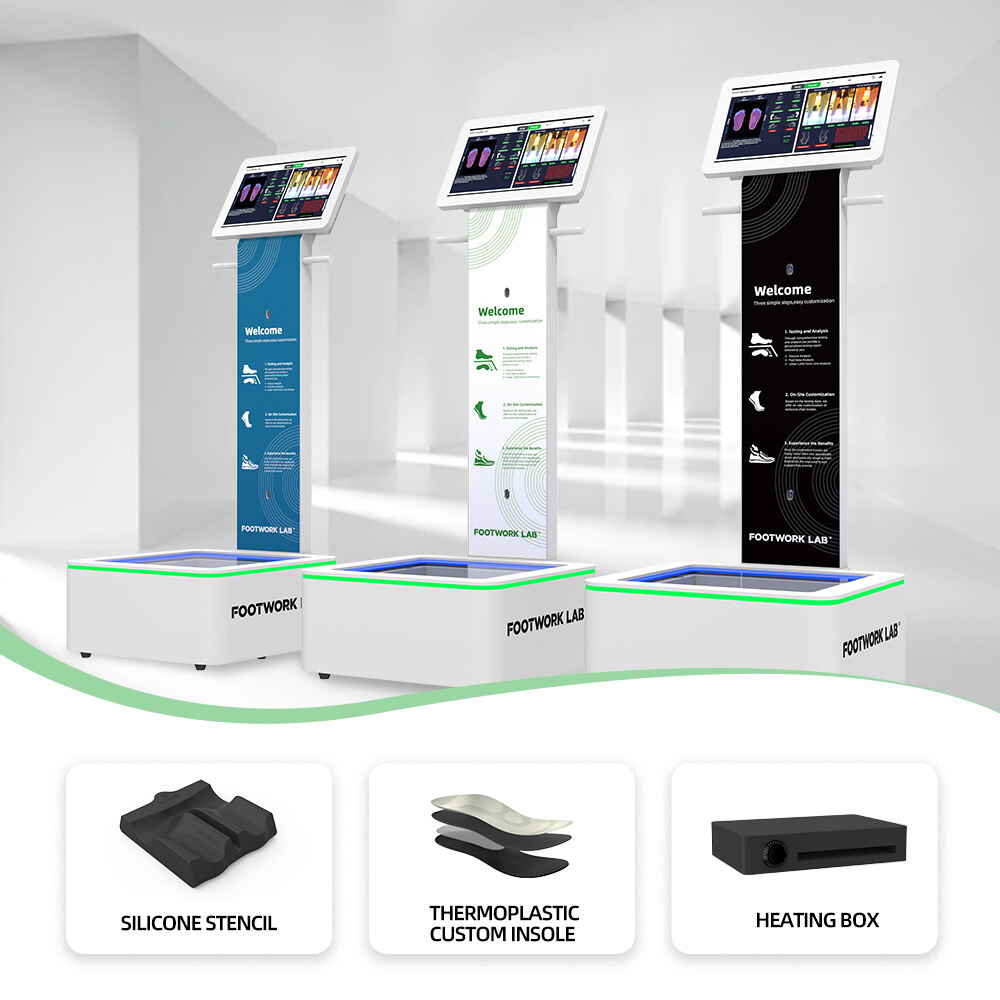Un scanner de pied est un appareil sophistiqué conçu pour capturer des images et des mesures détaillées en 3D du pied, constituant ainsi un outil essentiel dans des secteurs allant de la santé à la fabrication de chaussures. Cette technologie utilise des techniques d'imagerie avancées telles que la triangulation laser, la projection de lumière structurée ou la photogrammétrie pour créer des répliques numériques précises des contours du pied, y compris les voûtes plantaires, les talons, les orteils et la morphologie générale. L'avantage principal du scanner de pied réside dans sa capacité à remplacer les mesures manuelles traditionnelles, sujettes à des erreurs humaines, par des données objectives et haute résolution. En milieu clinique, les podologues et spécialistes en orthopédie utilisent des dispositifs de scanner de pied pour évaluer des anomalies structurelles telles que les pieds plats ou les voûtes plantaires hautes, permettant ainsi des diagnostics plus précis et des plans de traitement personnalisés. Dans la production de chaussures, ces scanners fournissent des données essentielles pour la création de chaussures adaptées à la morphologie individuelle, garantissant que chaque paire corresponde aux dimensions uniques des pieds du porteur afin d'améliorer le confort et de réduire les blessures liées aux frottements. Les systèmes modernes de scanner de pied s'intègrent souvent à des logiciels spécialisés qui transforment les données capturées en informations exploitables, comme des cartes de répartition de pression ou des analyses comparatives dans le temps. Ces logiciels peuvent également permettre l'intégration avec des outils de conception assistée par ordinateur (CAO), permettant aux fabricants de convertir directement les scans de pieds en designs prêts pour la production d'orthèses plantaires ou de chaussures sur mesure. De plus, des modèles portables de scanners de pied sont désormais disponibles, offrant une plus grande flexibilité pour des évaluations sur site dans des cliniques éloignées ou des environnements commerciaux, élargissant ainsi l'accès à une analyse précise du pied au-delà des cadres traditionnels. La technologie continue d'évoluer, les avancées en matière de rapidité et de précision permettant des scans en temps réel, particulièrement utiles dans des environnements cliniques ou commerciaux dynamiques où l'efficacité est essentielle. En fournissant un enregistrement numérique complet du pied, les dispositifs de scanner de pied facilitent une meilleure communication entre les professionnels de santé, les fabricants et les patients, assurant ainsi que les interventions et les produits soient adaptés aux besoins individuels avec une précision sans précédent.
